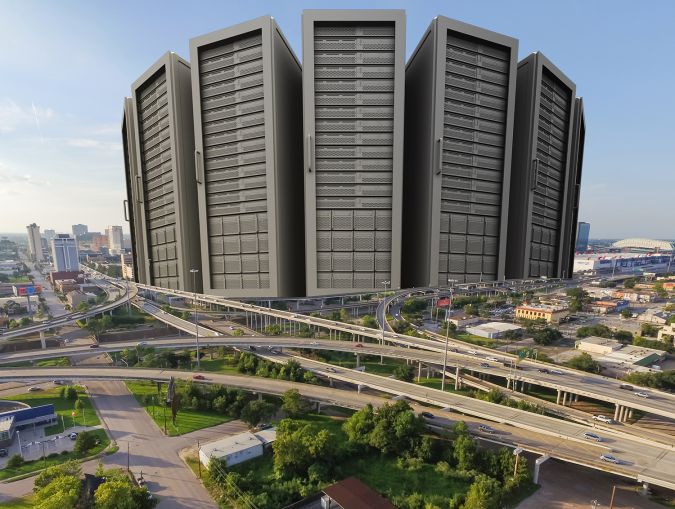Data Centers Lean Into Four Strategies for Filling Labor Gap
The military and the construction trades are among the ways owners and operators are scrambling to meet long-term demand
By Tom Acitelli June 10, 2024 6:00 am
reprints
Forget enough electricity. Or enough land. The real obstacle to the growth of data centers in the U.S. might now be not enough labor.
“The greatest challenge to construction is the lack of skilled workers,” a March report from consultancy Linesight said. “Key trades are already in short supply, and this will be exacerbated by decarbonization, an aging workforce that is not being replaced, and stagnant worker productivity.”
Solving the labor shortage, then, is a major challenge for data center developers, investors and operators.
The work comes as the asset class commands the sort of interest and numbers that used to define investment in the market in office skyscrapers, which, of course, has slowed pointedly amid higher financing costs and hybrid work. In late May, for instance, e-commerce colossus Amazon (AMZN) paid $218 million for a Northern Virginia site cleared for data center development (that’s right — just the land and entitlement). Meanwhile, private equity giant Blackstone (BX) is spending several billion dollars rolling out an artificial intelligence-powered data center business following its $10 billion purchase of operator QTS in 2021.
The investment boom in individual and portfolios of data centers predates the pandemic, too. Transactions in North America hit a 10-year annual peak in 2017 at $5.3 billion in deals, according to a report from brokerage JLL. That figure declined the next few years, before picking up again in 2021, when transactions totaled $4.5 billion. There were $4.6 billion in deals in 2023.
Both the JLL (JLL) report and one from early 2023 from consultancy McKinsey & Company — which predicted demand for data center services would grow 10 percent per year for the foreseeable future — cited labor as a prime obstacle to that very growth.
Plus, an early 2023 survey of more than 1,500 data center owners, operators, vendors and consultants by IT service management company Uptime Institute found staffing as the primary concern of respondents, outpacing improving energy performance. Some 92 percent of respondents said they were very, somewhat or slightly concerned about a lack of qualified staff.
“It’s very consistent,” Douglas Donnellan, an Uptime Institute senior research associate, said of the survey, which has been conducted annually for 13 years. “What our data has suggested is that things are not necessarily getting worse. They’re also not getting better. There’s a lot of untapped potential that the industry hasn’t fully recognized and embraced yet.”
How to tap that potential? There are four major ways to solve the skilled labor shortage in the data center industry. Each comes with advantages, and some solutions have built-in challenges of their own.
The fastest would appear to be through the conventional construction trades — bringing in carpenters, engineers, electricians, HVAC technicians and others who have the sort of training that translates faster into the specialized work of data centers.
“Electricians are a natural fit because so much of the infrastructure is related to power,” said Samir Shah, co-founder and managing partner at TBL Mission Critical, a 4-year-old firm based in Arizona that services data center operations and maintenance.
The company, like others in the space, has worked to recruit tradespeople from conventional construction and upkeep. That approach comes with challenges, though.
“The optimum time for an electrician is the age of 25, 26 to 35 — and that’s assuming they started training at 18,” Padraig Leahy, a Linesight vice president. “So, if you start training somebody today, they’re at their peak in six or seven years’ time.”
That, of course, means that existing pools of tradespeople that data center-related companies might tap are on the older side. They’re nearing retirement or unwilling to switch roles, never mind fields, by the time data center firms try to recruit them. Plus, it can take time for these new recruits, young or old, to get up to speed on the precise methods essential to the operating and servicing of data centers.
“We need to be thinking about how much labor is needed in four or five years’ time because that’s how long it takes to train labor,” Leahy said, stressing forecasts that show strong demand for data center services stretching well ahead of the present skills crunch. “It’s a medium- to long-term way to look at it.”
Competition for tradespeople comes not just from the march of time and the need for training but from other similarly future-facing fields. Think generative artificial intelligence companies, commercial space exploration outfits that barely existed a decade ago, and the chip manufacturers that the federal government is now so famously backing.
“A lot of the data center hot spots are in the same locations where you’re seeing some of the high-tech industrial projects, and they’re competing for the same labor force,” said Eoin Byrne, a vice president at Linesight.
To seed the field, then, many data center operators, developers and servicers are doing their own internal training. Giant players and smaller operators have in-house programs that provide equipment and training, and they often work with local community colleges and universities.
Microsoft, for instance, has what it calls a “Datacenter Academy” complete with rack cabinets containing servers, storage devices and networking equipment to provide trainees with hands-on experience. There’s also post-training mentoring. The academy has local offshoots in southern and northern Virginia and the Phoenix area — the nation’s two data center hubs.
At Northern Virginia Community College in Annandale, its original data center operations curriculum was launched in 2019 with a single class and about a dozen students, according to news site Inside NoVa. By last fall, it had turned out more than 140 graduates through a varied curriculum that includes a path to a two-year associate’s degree, placing most graduates in jobs. There are similar programs at community colleges in the Phoenix area and at Arizona State University.
Shah’s TBL Mission Critical develops talent through what he likens to a farm team system in baseball. The company will entice employees on the construction side to train as data center engineers and technicians — jobs that pay more and are often more physically comfortable.
Beyond the construction trades and training, there’s a third way to plug the data center labor gap. “A lot of times people who make good data center operators come from military backgrounds,” Shah said.
It’s in the training: People in the military scrupulously follow procedures and methods, or at least are trained to do so. Data centers have to operate certain ways over and over, or their oft-described “mission critical” services might go down and bring any volume of economic and communication activity down with it.
“It’s like with anything else when it comes to people,” Shah said. “You have to really have your eye on who has the talent, who has the attention to detail, who’s got the mentality to follow the procedure and follow it to the letter.”
The fourth major way to meet skilled data center labor demand would be through immigration — relaxing residency requirements to draw in the needed talent. That’s not necessarily a path in the U.S. yet, given the scabrous political climate, even if in Canada such policies to encourage skilled laborers to relocate are under federal consideration.
Also, innovations such as modular construction of data center components and generative AI to help run the behemoths remain peripheral to the four main solutions on offer. The former is just getting started, and the latter remains more promise than reality. All the while, the labor supply and demand imbalance grows so acute as to delay or derail new data center development.
“That may redirect some investments,” said Uptime’s Donnellan. “So far we haven’t seen a lot going in that direction, at least with the urgency that it kind of deserves.”
Tom Acitelli can be reached at tacitelli@commercialobserver.com.


